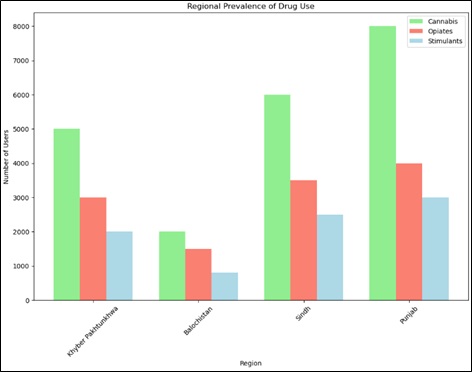Analyzing Drug Use in Pakistan: A Comprehensive Overview of Prevalence, Patterns, and Socio-Demographic Factors
Keywords:
Cannabis, Drugs, Mental Health Issues, HIV Infection.Abstract
In 2012, Pakistan conducted an extensive study to map drug use patterns across its population aged 15 to 64. The National Health Behaviour Survey 2012, complemented by a district study on Problem Drug Users, aimed to provide a comprehensive overview of drug use and its socio-demographic implications. The study involved interviews with over 51,000 individuals, including drug users, treatment center representatives, and key informants, to gather detailed data on substance use. Findings reveal that 6.7 million people, or 6% of the population in the specified age range, reported using illicit drugs in the past year. Of these, 4.25 million individuals are identified as suffering from drug use disorders, highlighting a severe public health challenge. Cannabis was found to be the most widely used drug, with 3.6% of the population reporting use. The demographic profile of cannabis users is predominantly male, averaging 33 years old, with only primary education, and engaged in full-time or part-time employment. Despite the high rate of daily use, treatment-seeking behavior is low, with only 7% of regular users seeking help in the past year. The study also indicates that 76% of regular opiate users began with cannabis, suggesting a gateway effect. Opiate use, including heroin and opium, affects about 1% of the population. Heroin is more prevalent than opium, with users averaging 34 years of age. This chronic addiction often leads to severe economic hardship, with some resorting to extreme measures to sustain their addiction. Poly-drug use is common, with 20% of drug users using multiple substances, and regional disparities in drug use patterns are evident, with higher rates in Balochistan compared to Sindh. Stimulant use, including amphetamines and cocaine, is emerging but remains low. Non-medical use of prescription drugs, such as opioids and sedatives, is significant and often associated with mental health issues. Inhalant use, although less documented, is notable among street children. The study's findings underscore the complexity of drug use in Pakistan, marked by high rates of cannabis and opiate use, emerging stimulant trends, and significant non-medical use of prescription drugs. The rise in injecting drug use and HIV infection rates highlights the urgent need for targeted public health interventions and comprehensive support programs tailored to regional and demographic specifics. Addressing these challenges will require a multifaceted approach, incorporating increased treatment access, prevention programs, and enhanced mental health support.








